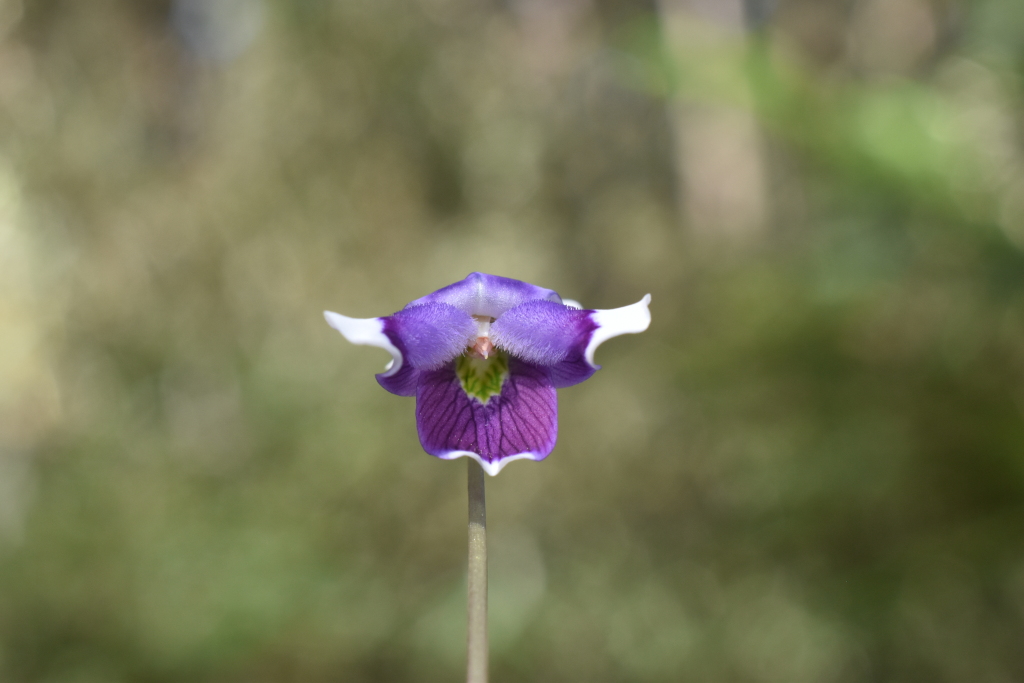Viola eminens
K.R.Thiele & ProberStoloniferous perennial herb, glabrous to sparsely pubescent. Leaves mostly tufted, but occasionally leaves alternate along stems (in Grampians). Lamina broad-reniform, 10–15(–25) mm long, (12–)25–35(–60) mm wide, truncate or nearly so at base, or with a broad sinus, apex rounded or very broadly obtuse, margins shallowly 7–20-toothed; petioles 2–12 cm long; stipules free, narrowly to broadly triangular, 2–5 mm long, often shallowly gland-toothed. Flower-scapes to 25 cm long, exceeding leaves, bracteoles usually below the middle, rarely above. Sepals lanceolate, 3.5–5.5 mm long, acute, basal appendages small; petals 8–13 mm long, 2-coloured, mauve-violet near base and white near apex (rarely the apical part pale violet) with sharp demarcation between colours; anterior (lower) petal ovate to broad ovate, mostly 5–9 mm wide, broadest in the basal half, usually emarginate, the middle 3 longitudinal veins prominent and parallel, not spurred; lateral petals twisted through 180 degrees, densely bearded in the basal half. Capsule ovoid, 7–9 mm long; seeds 1.6–2.6 mm long, glossy purplish-black.. Flowers mostly Dec.–Mar.
VVP, GipP, OtP, CVU, GGr, EGL, EGU, HSF, HNF, Strz, MonT, HFE, VAlp. Mostly moist montane to subalpine forests from near Kinglake east, sometimes extending to alpine bogs, but also toward sea level in gullies and wetter forests in the far east. In the Grampians mostly associated with streams where sometimes in more exposed sites (e.g. Mt William, Zumsteins).
Grampians plants may be semi-scandent and have alternate rather than tufted leaves. It is not clear if this is merely a consequence of habitat or if these plants represent a distinct entity possibly warranting formal recognition.
 Spinning
Spinning


